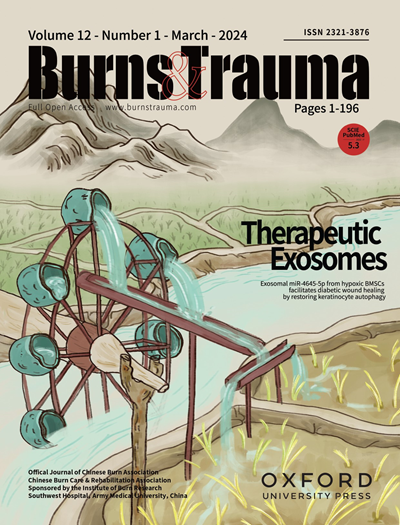Diagnosis, treatment and monitoring of patients with primary malignant tumors of the bones of the pelvis and lower extremities: promising technologies
IF 6.3
1区 医学
Q1 DERMATOLOGY
引用次数: 0
Abstract
Background. Diagnosis and treatment of patients with malignant bone tumors requires continuous improvement of existing methods of diagnosis and treatment. Purpose: to improve the treatment results in patients with tumors of the femur and pelvis through the application of medical imaging technologies, 3D modeling and 3D printing of personalized models of bones and tumors, arthroplasty and bioactive ceramics. Materials and methods. Examination, treatment and monitoring of 28 patients with malignant tumors of the bones of the pelvis, lower extremities and examination of 16 apparently healthy people were performed. Computed tomography (CT) and magnetic resonance imaging (MRI), 3D modeling, biochemical markers of bone metabolism, arthroplasty, biomine were applied. Results. The technology of creating a 3D model of bones affected by malignant tumors has been developed based on the results of MRI, CT and 3D printing. Preoperative planning and training on 3D models reliably reduced intraoperative blood loss, duration of surgery, time of complete recovery of the extremity function, the risk of postoperative complications and, accordingly, increased the duration of the first recurrence-free period. The use of bone resorption and osteosynthesis markers allows to control the osseointegration of endoprosthesis and biomine, to diagnose recurrence/metastasis timely. Conclusions. The application of CT + MRI + 3D modeling + training on 3D models + tumor removal + arthroplasty + biomine algorithm provided functional results after 12 months: excellent — in 57.35 %, good — in 29.41 % of cases. Postoperative complications were observed only in 12.2 % of patients, local recurrences — in 7.3 %.骨盆和下肢原发性恶性肿瘤患者的诊断、治疗和监测:有前途的技术
背景。恶性骨肿瘤患者的诊治需要不断改进现有的诊疗方法。目的:通过医学影像技术、骨肿瘤个性化模型的3D建模和3D打印、关节成形术和生物活性陶瓷的应用,提高股骨、骨盆肿瘤患者的治疗效果。材料和方法。对28例骨盆、下肢骨恶性肿瘤患者进行了检查、治疗和监测,并对16例表面健康的人进行了检查。应用计算机断层扫描(CT)和磁共振成像(MRI)、三维建模、骨代谢生化标志物、关节成形术、生物胺。结果。基于MRI、CT和3D打印的结果,已经开发出了创建受恶性肿瘤影响的骨骼3D模型的技术。术前规划和3D模型训练可靠地减少了术中出血量、手术时间、四肢功能完全恢复时间和术后并发症的风险,从而增加了第一次无复发期的时间。使用骨吸收和骨合成标志物可以控制假体和生物胺的骨整合,及时诊断复发/转移。结论。应用CT + MRI + 3D建模+ 3D模型训练+肿瘤切除+关节置换术+生物胺算法12个月后功能效果:优57.35%,良29.41%。术后并发症发生率仅为12.2%,局部复发发生率为7.3%。
本文章由计算机程序翻译,如有差异,请以英文原文为准。
求助全文
约1分钟内获得全文
求助全文
来源期刊

Burns & Trauma
医学-皮肤病学
CiteScore
8.40
自引率
9.40%
发文量
186
审稿时长
6 weeks
期刊介绍:
The first open access journal in the field of burns and trauma injury in the Asia-Pacific region, Burns & Trauma publishes the latest developments in basic, clinical and translational research in the field. With a special focus on prevention, clinical treatment and basic research, the journal welcomes submissions in various aspects of biomaterials, tissue engineering, stem cells, critical care, immunobiology, skin transplantation, and the prevention and regeneration of burns and trauma injuries. With an expert Editorial Board and a team of dedicated scientific editors, the journal enjoys a large readership and is supported by Southwest Hospital, which covers authors'' article processing charges.
 求助内容:
求助内容: 应助结果提醒方式:
应助结果提醒方式:


